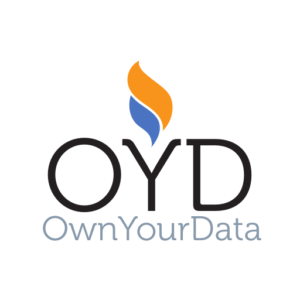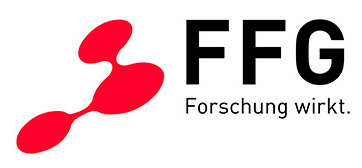Digital Product Passports Towards More Sustainable Futures
Digital product passports (DPPs) have gained attention through the EU’s Circular Economy Action Plan and the Ecodesign for Sustainable Products Regulation (ESPR). They enable capturing contextual data throughout the product value chain, such as environmental impact, material composition, and production history. DPPs are seen as critical components for creating circular economies, especially in light of the European Green Deal to align industry with climate targets. As DPPs are already becoming mandatory for many products, their social, technical, environmental, and economic implications have to be considered from the start through interdisciplinary conversations and collaborations.
MyData Global Conference was the perfect opportunity to have insightful discussions as we explored how DPPs can contribute to more sustainable futures. In our presentation, we also introduced the Promoting Accelerated Circular Economy through Digital Product Passports (PACE-DPP) project as an applied case study to explore the potential for DPPs.
So, what exactly is a Digital Product Passport?
A Digital Product Passport is a product-specific dataset accessible via a digital carrier. It enables businesses, regulators, and consumers to access key information—such as material composition, environmental impact, production history, and recyclability.
They enable capturing contextual data throughout the product value chain, such as environmental impact, material composition, production history, repair activities, and recycling capabilities. There is also exciting potential to capture more information, going beyond just those related to sustainability.
By allowing information throughout a product’s lifecycle to be accessible and sharable, they can enable transparency, empower smarter choices, support regulatory compliance, and foster trust across the supply chain. So, DPPs are expected to play a key role in facilitating innovative approaches by not only enabling the exchange of information but also driving new business value and increased efficiencies across the supply chain.
Main Aspects of DPPs
The European Commission sets out some requirements for Digital Product Passports, including:
- User friendliness: Access to the digital product passports should be free and easy for all stakeholders.
- Tailored information: Differentiated access with different types of information available (for example, customers, lawmakers, and suppliers will look for and care about different information).
- Accuracy: The data provided needs to be accurate, complete and up to date
- Interoperable: DPPs must be interoperable to facilitate the sharing and utilisation of data generated by various actors.
- Adaptable: Any further data other than obligatory data can be added and stored.
Promoting Accelerated Circular Economy through Digital Product Passports Project- Wood Use Case
In our presentation, we offered a case study to communicate what this all means in practice. The PACE-DPP project is already piloting DPPs in the wood industry—enhancing traceability from forest to mill gate. With this use case, we demonstrated how DPPs can streamline operations, reduce waste, and promote sustainable sourcing.
By integrating circular economy principles into value chains and conducting thorough analyses of supply chains within the wood/paper and electronic device sectors, the project aims to enhance processes with circular flows.

Benefits of Digital Product Passports
During our session, we discussed the diverse benefits that Digital Product Passports (DPPs) can bring across different domains. The following points summarize key takeaways from our presentation as well as valuable inputs and reflections shared by participants during the discussion.
Business
- Streamlined processes from partners to suppliers, as businesses will need to understand processes of their own and their partners before even thinking about DPPs. (For example, in a furniture business will need to understand their fabric and wood suppliers’ processes to be included in their furniture’s DPPs).
- Holistic analysis of the business supply chain to provide more accurate information on DPPs
- Increase efficiency and drive down costs through streamlining data flows and business operations
- Generate potential and incentives for multi-stakeholder collaboration and enable new cooperative business models
- DPPs can create a competitive advantage for those businesses that go beyond the minimum requirements and include information about new areas such as their brand authenticity, ethical standards and social impact
- There is a critical role, especially for big players, to promote and lead sector-wide best practices (for example, Ikea can bring in new standards through its DPP implementation to inspire change).
Socially
- Empower consumers and promote transparency, as DPPs can act as accountability mechanisms.
- Fair and equitable digital societies by highlighting issues around product life cycles from raw materials to retail
- Broader civic engagement and increased activism, such as by creating awareness campaigns around greenwashing, backed by data provided through DPPs.
Legally
- The biggest motivation to make DPP achieve its full potential is the legal requirements
- Regulatory enforcement that can have some teeth to enable DPPs to fulfil their purpose and achieve their full potential
- Promote connected thinking when it comes to regulatory compliance. For example, a business working in the wood industry will need to comply with forestation regulations, fulfil DPPs requirements, consider GDPR, etc.
How to get there?
To fully realise their potential, we have to have human-centric approaches to DPPs from their design, to implementation and use. We wrapped up our presentation by reminding five core principles we need to keep in mind if we want to reap these benefits:
- Transparency: Ensuring information siloes are broken to enable data flow between actors.
- Human-Centric Approach: Ensuring that the information that reaches consumers and citizens more broadly is accurate, understandable, and relevant. This is an exciting area to explore further to understand what this will mean for digital product passports in practice.
- Accountability: Ensuring there are robust regulations with teeth to prevent inaccurate claims such as greenwashing, etc. and that, as they are being rolled out and implemented, the regulations are not watered down.
- Trust: Between partners, manufacturers, suppliers, etc., as well as amongst citizens to ensure sustainable products become the norm in the EU, and we work towards truly circular economies.
- Equality: Holistic approach needs to include equality as it relates to sustainability and circular economies. The DPPs have great potential to highlight the interconnected nature of growth on a global scale and environmental boundaries.
DPPs could be key to enabling circular economy and carbon reduction strategies, including those for new markets and business models, and also to social compliance reporting. As we move toward a greener future, Digital Product Passports offer a powerful way to connect sustainability with digital innovation—making every product part of the solution.

The PACE-DPP project received financial contributions from the Austrian Federal Ministry for Climate Action, Environment, Energy, Mobility, Innovation and Technology (BMK), supported by the Austrian Research Promotion Agency (FFG funded project #917177), as well as from the German Federal Ministry for Economic Affairs and Climate Action (BMWK), supported by the German Research Promotion Agency (DLR-PT).




